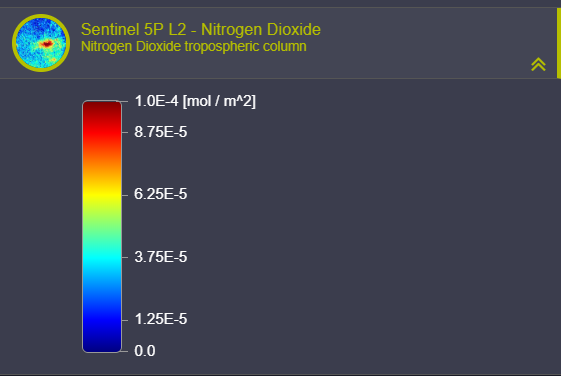Hey everybody!
I’ve been using EO-browser for a couple of months now. It’s pretty cool how you can access different satellites and get various information.
At the moment I’m stuck in reading the values for a specific color. I need some reference values. So for instance, if I’m using Sentinel 5P and checking for NOX gasses, I would like to have some reference values for toxicity.
I’m guessing that the colors are based on a linear scale and that it doesn’t correlate with toxicity. But does anyone know of some reference values that explain the toxicity?
Thanks in advance.


